| Background
Most of the flavors and sugars in beer are derived from malt. In fact malt defines the various characteristics of beer. Malt can either come from grain and dry/liquid form.
Malting Process
The malting process consists of steeping the grain in water and allowing it to germinate. During germination the starches in the grain are converted into sugars, simple soluble starches, and other enzymes. The grain then must be kilned in order for it to dry. Some sugars are caramelized like in crystal malt or blacken it like a black patent malt. The malt is now ready to be made into sweet wort by the home brewer.
There are 3 steps to the malting process.
1. Steeping:
Barley is intermittently submerged in water for about 36-48 hours to begin germination. Enzymes are released and simple sugars supply energy to the growing embryo.
2. Germination:
The steeped barley continues to grow and enzymes start breaking down proteins and cellular wall components. The steeped barley remains submerged for 3.5-4.5 days with air circulating through the germinating barley that is turned every 8-10 hours to ensure even germination.
3. Kilning:
Heated air circulates through the product to end germination. Kilning develops malt flavor and color and dries the malt to preserve its quality. The finished malt then goes to a brewery where it is crushed and water is added to it. Biochemical reactions continue to break down the starches and proteins in the malt. The wort (sugar mixture rich in maltose and other amino acids) is created from the malt and is converted to ethanol by brewers yeast.
The following is a visual graphic of the malting process from probrewer.

HomebrewTalk offers a detailed chart about the flavors imparted from different kinds of malts. Very informative.
ProBrewer offers a pdf detailing how to identify different variants of malt and kernel grains.
MALTS AND ADJUNCT CHART FROM BEERADVOCATE
The following is a growing list of different malt & adjunct types. |
| Type |
Description |
| Base Malts |
Base malts usually account for a large percent of the total grain bill, with darker-colored specialty malts accounting for 10 to 25% of the grain bill. The only exception is wheat malt, which can make up to 100% of the total grain bill in brewing wheat beers. Base malts and, to some extent, light-colored specialty malts provide most of the enzymatic (diastatic) power to convert starches into fermentable sugars. The base malts provide the highest extract potential. Dark-colored specialty malts, caramelized malts, roasted malts, unmalted barely, and other malted grains are added in smaller quantities to obtain darker colors and to enhance flavor characteristics. Depending on the style of beer brewed, the brewer may use only one or two types of barley malts, or as many as seven or eight. Other grains used in brewing include corn, rye, and oats. |
| Caramel Malts |
Caramel malt is made from green malt that is produced by drying the wet germinated barley at controlled temperatures, causing the starches to convert to sugars and caramelize. The major variable in the process is the roasting temperature, which determines the depth of the color and the degree of caramel flavor. Caramelized malts come in a wide range of colors, from light to very dark amber, and with flavors ranging from a mild sweet caramel to caramel/burnt sugar. It is primarily known for its color control but can also provide body (dextrins), mouthfeel, and some sweetness. Caramel malt will also improve foam stability. Light caramel malts accentuate the soft malt flavor, while darker caramel malts promote a caramel, slightly sweet taste, European in flavor. |
| Dark Malts |
Specialty dark-colored malts have little or no enzyme activity because of high-temperature kilning or roasting. Consequently, specialty malts cannot be used alone in a mash. These malts are used in relatively smaller amounts than light-colored specialty malts because of their strong flavoring and coloring components. Some styles of beers, such as stout and Bock, cannot be made without the use of these specialty malts. Amber and brown malts are examples of specialty dark-colored malts. |
| Light Malts |
Light-colored specialty malts are kilned at higher temperatures than base malts and impart a deeper color and a fuller malt flavor and aroma to the finished beer. Enzyme levels are lower than for base malts. Vienna and Munich malts are examples of specialty light-colored malts.Pale Ale malt is most commonly associated with British ales, and has the flavor characteristic of full maltiness. It is well modified, and is well suited to a single temperature infusion mash. It tends to have fewer enzymes, although sufficient enough to allow up to 15% adjuncts in the mash. It also tends to have a lower haze potential, and is less likely to produce DMS, which can lead to a ‘sweet creamed corn’ aroma.Lager malt is less well modified in the malting process, and so is better suited to a program temperature mash. It typically has a high protein content, and has a thick husk which is rich in polyphenols (tannins), which can lead to protein haze and astringency. The 2-row variety tends to be lower in enzyme and protein levels and has a thinner husk than the 6-row malt, but this quality depends more on the strain of barley used to make the malt. |
| Roasted Malts |
Chocolate malt is not roasted quite as long as black malt; consequently, it is lighter in color more dark brown and retains some of the aromatics and flavor of malts sweetness. It imparts a nutty, roasted flavor to the beer but does not make it as bitter as black malt. There are no enzymes in chocolate malt. Chocolate is an essential ingredient in porters and stouts and can be used in mild ales, brown ales, and old ales, and can be incorporated into the grist of dark lagers.Making black malt involves roasting the malted barley at temperatures so high that they drive off all of the aromatics (malt flavor). There are no enzymes in black malt. In excess, black malt will contribute a dry, burnt flavor to the beer that may be perceived as a bitterness different from that derived from hops. |
| Corn |
Corn products have traditionally been the adjunct of choice among brewers. They are extremely consistent in terms of quality, composition, and availability and produce a spectrum of fermentable sugars and dextrins similar to that produced by malt upon enzymatic conversion.Corn has a sweet, smooth flavor that is compatible with many styles of beer. It is the most popular adjunct used in American breweries. It lowers the protein and polyphenol content of beers, thereby lightening body and reducing haze potential. Corn will provide a somewhat neutral flavor to the finished beer. A “corn” taste may be apparent, making it generally more suited to the sweeter dark beers and lagers than to the drier pale ales. It is, however, one of the best adjuncts to use for full-bodied bitters. Some brewmasters claim that the use of corn (1020%) will help stabilize the flavor of beer. |
| Grits |
Grits consist of uncooked fragments of starchy endosperm derived from cereal grains. The starch of these adjunct products is in its native form, and is not readily attacked by the malt diastase enzymes during mashing. Consequently, these adjuncts must be processed by boiling in a cereal cooker to bring about solubilization and gelatinization of the starch granules and render them susceptible to diastatic enzyme attack. Unlike in America and Australia, grits are rarely used in British brewing, as cereal cookers are not found in most traditional British breweries. |
| Malt Extracts |
Malt extracts can be used as a sole source of fermentable sugar, or they can be combined with barley malt. The malt extract comes in the form of syrup or dried powder. If the final product is a dried powder, the malt extract has undergone a complete evaporation process by means of “spray-drying,” thus removing almost all of the water. For simplicity, use an 85% conversion factor when substituting dried malt for syrup. Syrups are more popular than dried malt extract, possibly because they are less trouble to store. A common problem noticed in malt extract beers is the thin, dry palate, which correlates with a low terminal gravity. Another common problem is the lack of a true “dark malt” flavor in dark beers. |
| Oats |
The high protein, fat, and oil content of oats is theoretically a deterrent to their use in brewing. However, oats have been used in the brewing process, particularly in brewing oatmeal stout. |
| Refined Starches |
Refined starches can be prepared from many cereal grains. In commercial practice, refined wheat starch, potato starch, and cornstarch have been used in breweries; corn starches, in particular, are used in the preparation of glucose syrups. Wheat starch has been employed in breweries in Australia and Canada, where local conditions make it economical to use. However, the most important source of refined starch is corn. |
| Rice |
Rice is currently the second most widely used adjunct material in the U.S. in the production of light-colored lager beers (30). Rice has almost no taste of its own, which is regarded as a positive characteristic since the rice will not interfere with the basic malt character of the beer. It promotes dry, crisp, and snappy flavors and is employed in several premium brands, including Budweiser. Some brewers prefer rice because it has a lower oil content than corn grits. One disadvantage in using rice is the need to use an additional cooking vessel because its gelatinization temperature is too high for adequate starch breakdown during normal mashing.Different types of rice vary widely in their suitability for use in brewing. Short-grain rice is preferred because medium- and long-grain varieties can lead to viscosity problems. In milling rice, a certain proportion of the rice kernels are chipped and broken, rendering them unsuited for table use because of their impaired physical appearance. It is this portion of the broken rice that is designated as “brewer’s rice.” |
| Syrups & Sugars |
The British are known for their use of syrups and sugars, which are mainly used as nitrogen dilutents. The reduction in proteins leads to shorter fermentation periods, cleaner yeast, and sharper filtration (allowing more beer to be processed with the same amount, or less, of filter aid). Another advantage in using syrups and sugars is that the carbohydrate component can be controlled and custom manufactured to the needs of the brewer. Syrups and sugars also allow for shorter boiling times and high-gravity brewing, and they can be used to expand brew house capacity. Finally, syrups and sugars are handled easily in bulk form. Cereal adjuncts need handling systems such as conveyors, dust collectors, and milling operations. Brewing syrups and sugars, having already undergone gelatinization and saccharification, can be added directly to the kettle or can be used in priming, thereby bypassing the mashing operation. |
| Sugar |
Dextrose is also known as corn sugar and is available in the trade in the purified form as a spray dry or as a crystalline powder. Dextrose sugar is added directly to the brew kettle during boiling.Various grades of sucrose are used in the brewing industry. Few brewers today use raw sugar; most prefer the more consistent products of the sugar refiner. Granulated sugar, the normal end product of the refining process, may be added directly to the kettle, but usually is dissolved in a solution before being added.Malto-dextrin is the most complex fraction of the products of starch conversion. It is tasteless, gummy, and hard to dissolve. It is often said to add body (palate fullness) to beer, increase wort viscosity, and add smoothness to the palate of low-malt beers. However, it is easy to increase the dextrin content of grain beers by changing the mash schedule or using dextrin malt. Malto-dextrin is of interest mainly as a supplement to extract brews.Caramel is used in brewing as a flavor and/or coloring agent. For example, many milds and sweet stouts contain caramel for both flavor and color. Caramel may be used either in the kettle or in primings to make minor adjustments to the color of the beer, but the choice of malt grist and the grade of adjuncts added to the kettle will determine the fundamental color of the beer.Invert sugar is a mixture of dextrose (also called glucose) and fructose syrup. |
| Syrups |
The two major syrups used in brewing are sucrose- and starch-based. The sucrose-based syrups have been refined from natural sources such as sugar cane or beets. The starch-based syrups are produced from cereals by hydrolysis using acid, exogenous enzymes, or a combination of the two to produce a range of syrups with different fermentabilities. In recent years, there has been a great development in the range of starch-based syrups produced from corn and wheat. In the U.S., these adjuncts are produced exclusively from yellow corn; while in Europe, they are produced from corn and wheat. The starch-based syrups are commonly referred to as “glucose” syrups. This name is misleading, however, since the syrups contain a large range of sugars, depending on the method of manufacture dextrose, maltose, maltotriose, maltotetraose, and larger dextrins. |
| Unmalted Barley |
Unmalted barley gives a rich, smooth, “grainy” flavor to beer. Unlike the other adjuncts, unmalted barley will contribute foam (head) retention to the finished beer because of lower levels of proteolysis. However, the nitrogenous and complex proteins that contribute to head retention also contribute to chill haze problems. Clarity problems make unmalted barley inappropriate for light beers, which is one reason why corn and rice are preferred. It is essential in dry stout, e.g., Guinness Stout.Unmalted barley can be employed for as much as 50% of the total grist, but it usually makes up no more than 10 to 15% as an adjunct. High levels of unmalted barley can lead to a slightly harsh taste in the beer. It can also result in insufficient malt enzymes for the necessary hydrolysis of starch, protein, and beta-glucans. Incomplete degradation of beta-glucans can increase wort viscosity and runoff times, which could effect the stability of the finished product. These problems can be alleviated by employing a beta-glucans rest at a range from 45 to 50ºC, the temperature optimum of beta-glucanase. Another approach is to incorporate fungal or bacterial beta-glucanases and alpha-amylases to facilitate starch gelatinization in the cooker and mash filtration.Roasting unmalted barley at high temperatures makes roasted barley. Roasted barley is not black in appearance; it is rather a rich, dark brown. It has an assertive, roasted flavor, similar to roasted coffee beans, with a sharp, acrid after-palate, and is especially used in the making of dry stouts and porters. It contributes significantly to the color of the beer, enhances head production and stabilization, and whitens the head on the beer. There are no enzymes in roasted barley. Roasted barley produces a stronger, drier, more bitter taste than roasted malt and is less aromatic and drier, with a more intense burnt flavor than black malt. |
| Wheat |
Wheat malt, for obvious reasons, is essential in making wheat beers. Wheat is also used in malt-based beers (35%) because its protein gives the beer a fuller mouthfeel and enhanced beer head stability. On the down side, wheat malt contains considerably more protein than barley malt, often 13 to 18%, and consists primarily of glutens that can result in beer haze. Compared to barley malt it has a slightly higher extract, especially if the malt is milled somewhat finer than barely malt. European wheat malts are usually lower in enzymes than American malts, probably because of the malting techniques or the varieties of wheat used.Unmalted wheat often is used as an adjunct by brewers who wish to enhance head retention and foam stability. It also contributes to the body or “palate fullness” of the beer. Its high content of proteins greatly enhances foam stability. Beers made from significant amounts of wheat adjuncts are likely to be light in flavor and smooth in taste qualities. Wheat adjuncts are used in the same manner as barley adjuncts; but unlike with barley, there is almost no husk in wheat. Thus, tannins are not much of a problem. The gelatinization temperature range for wheat is between 52 and 64ºC. |
| List partially compiled using descriptions from The Brewers’ Handbook http://www.beer-brewing.com. |



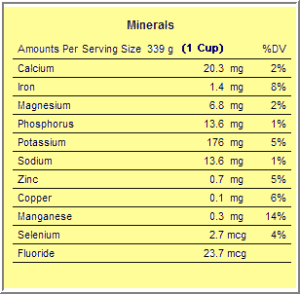
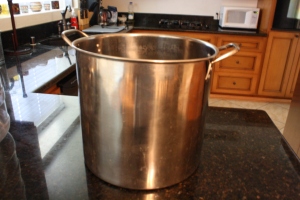



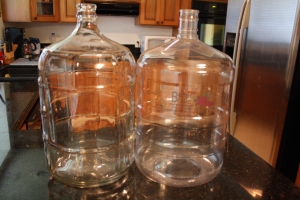
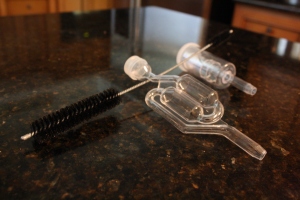
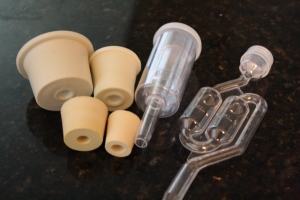
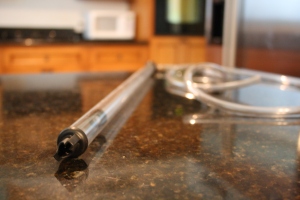


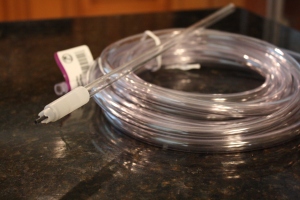


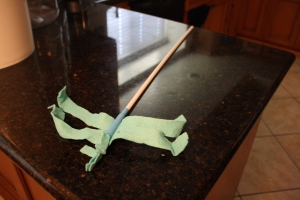


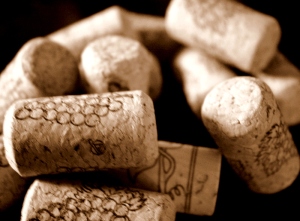

![the difference between cut rim and rolled rim [after Riedel]](https://i0.wp.com/www.meadmadecomplicated.org/figures/rims.gif)



